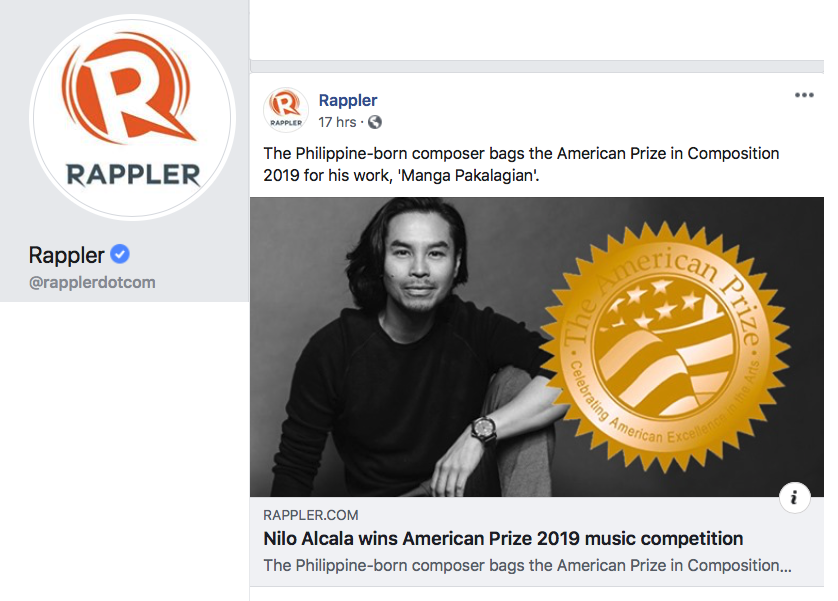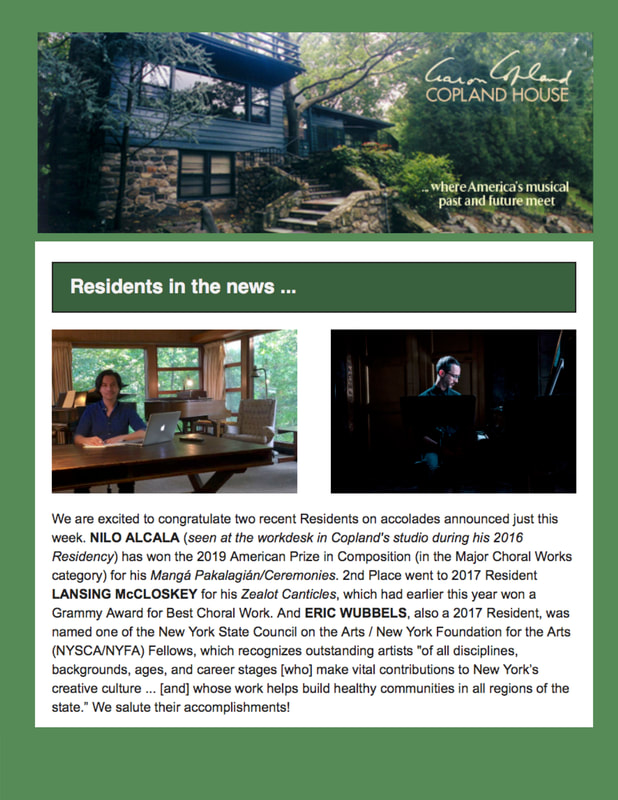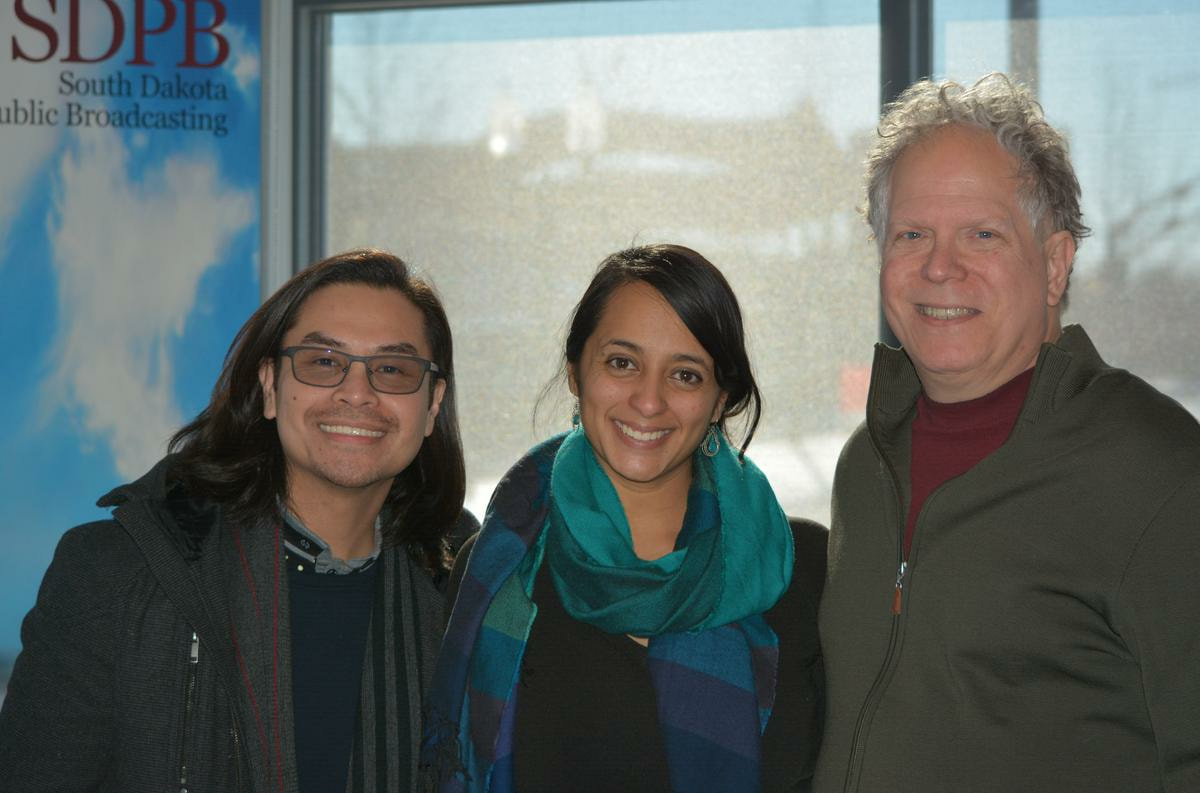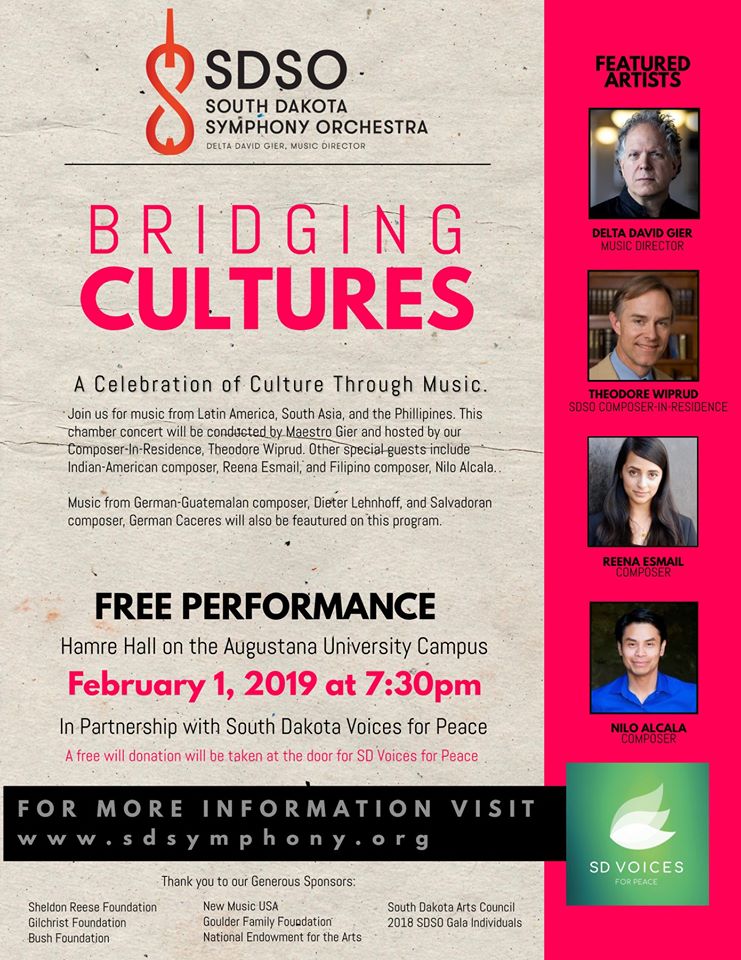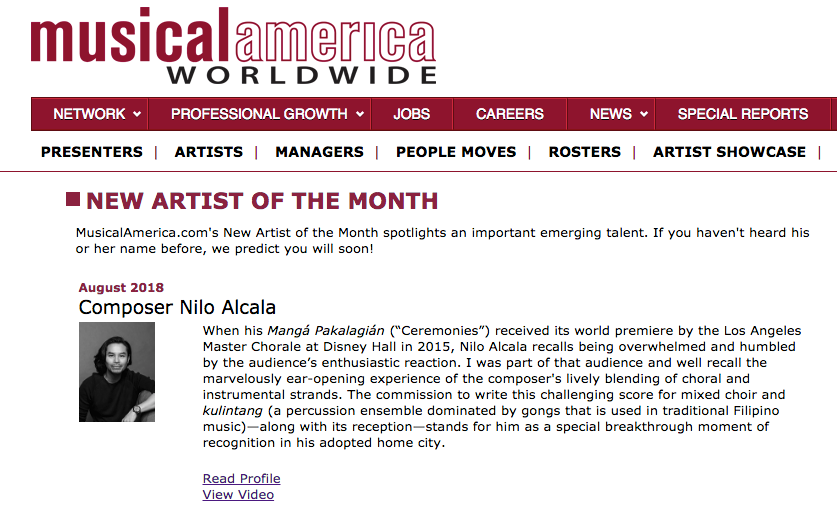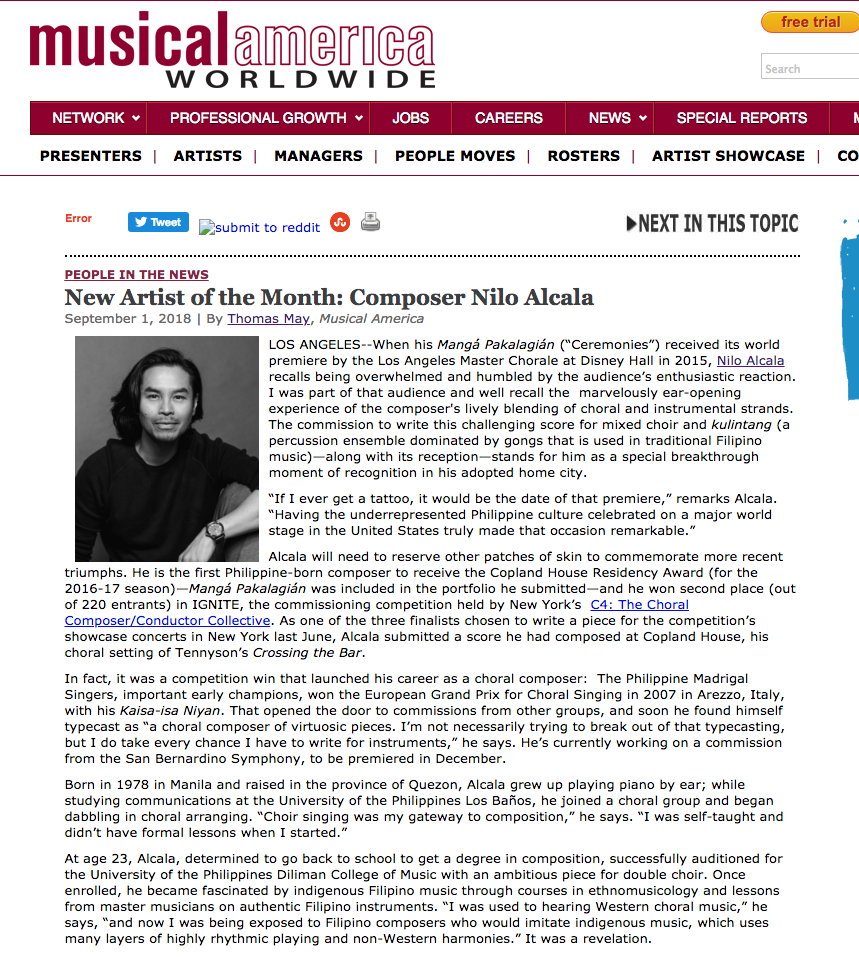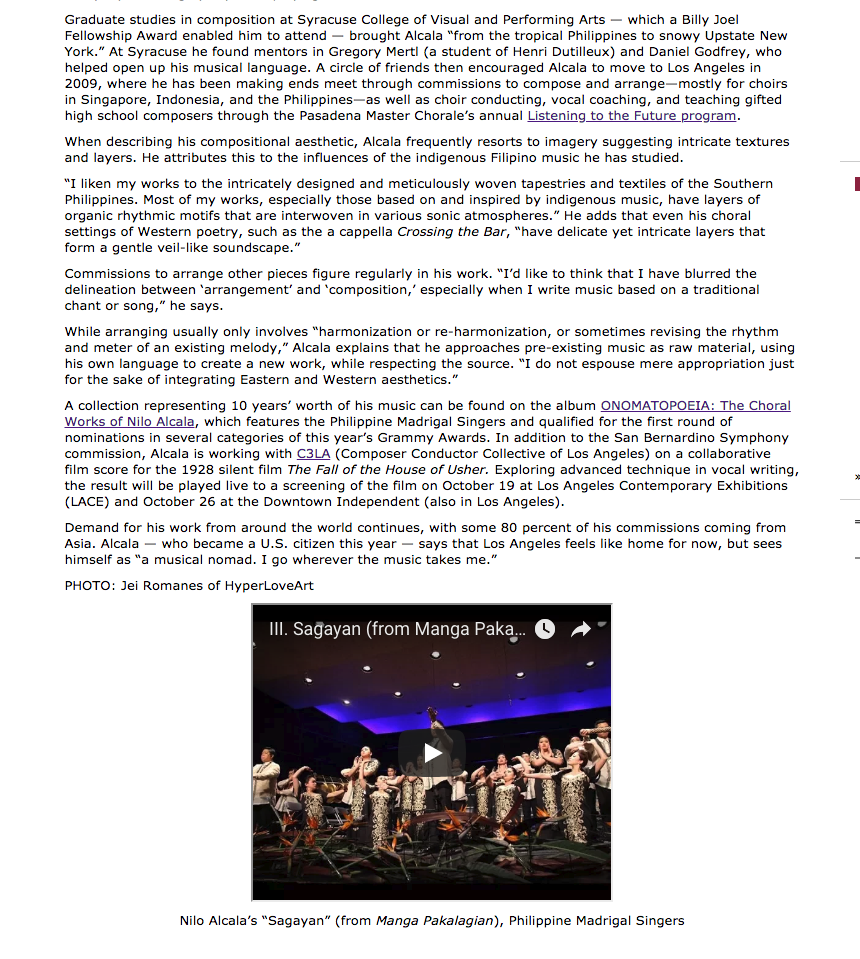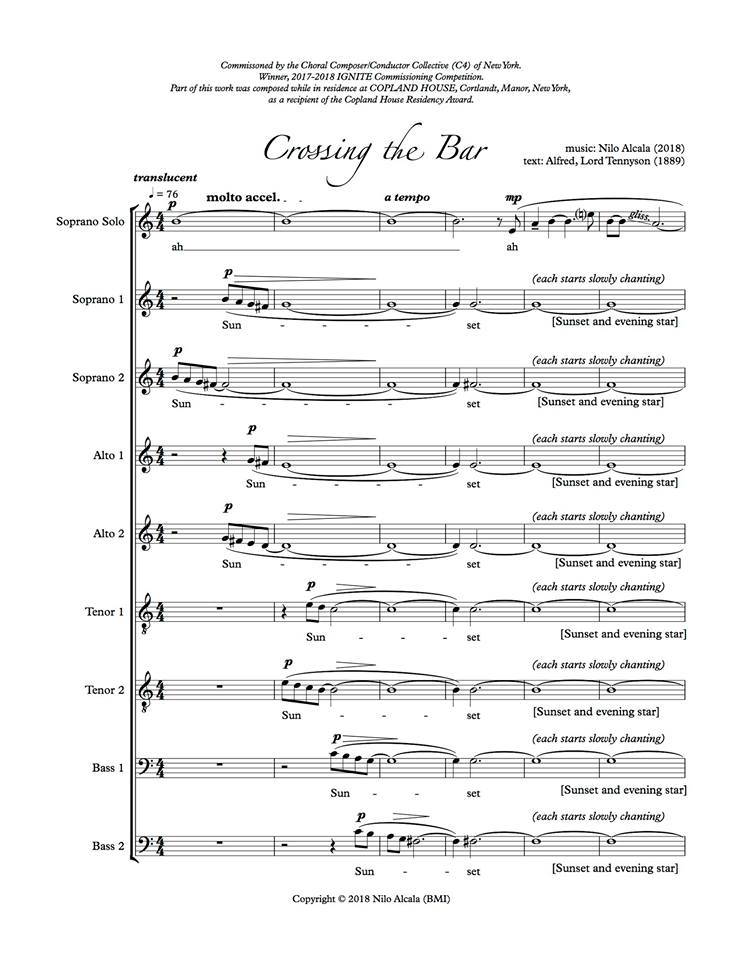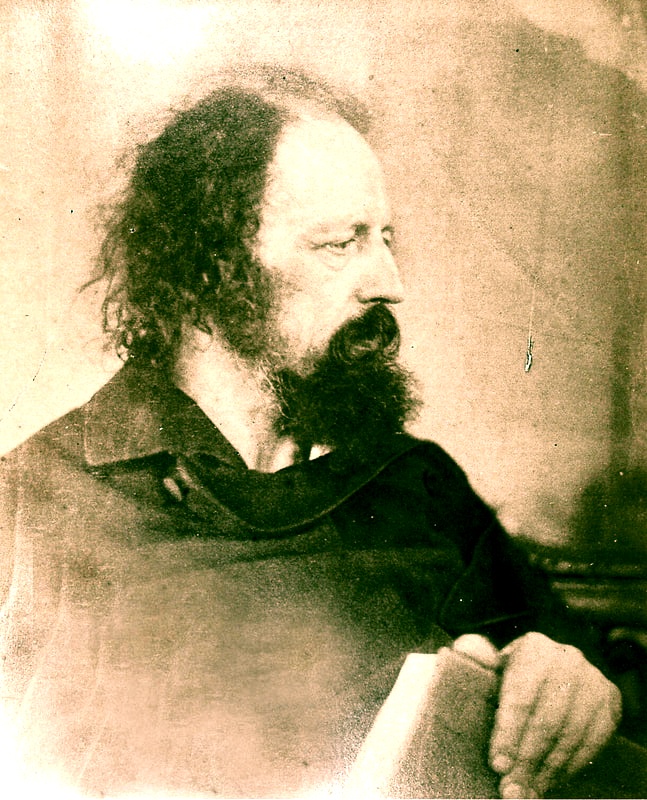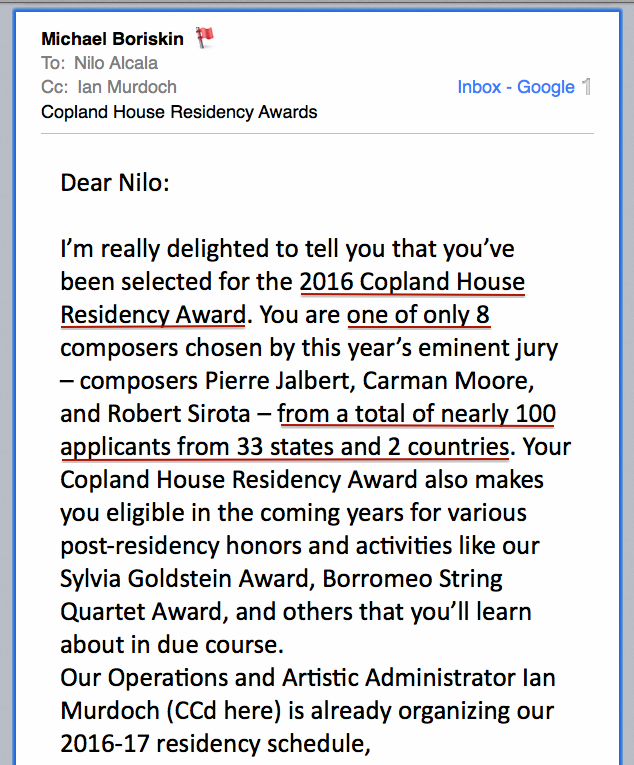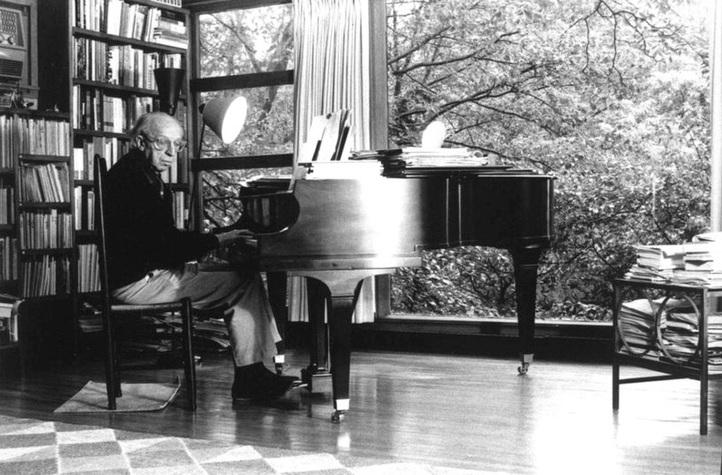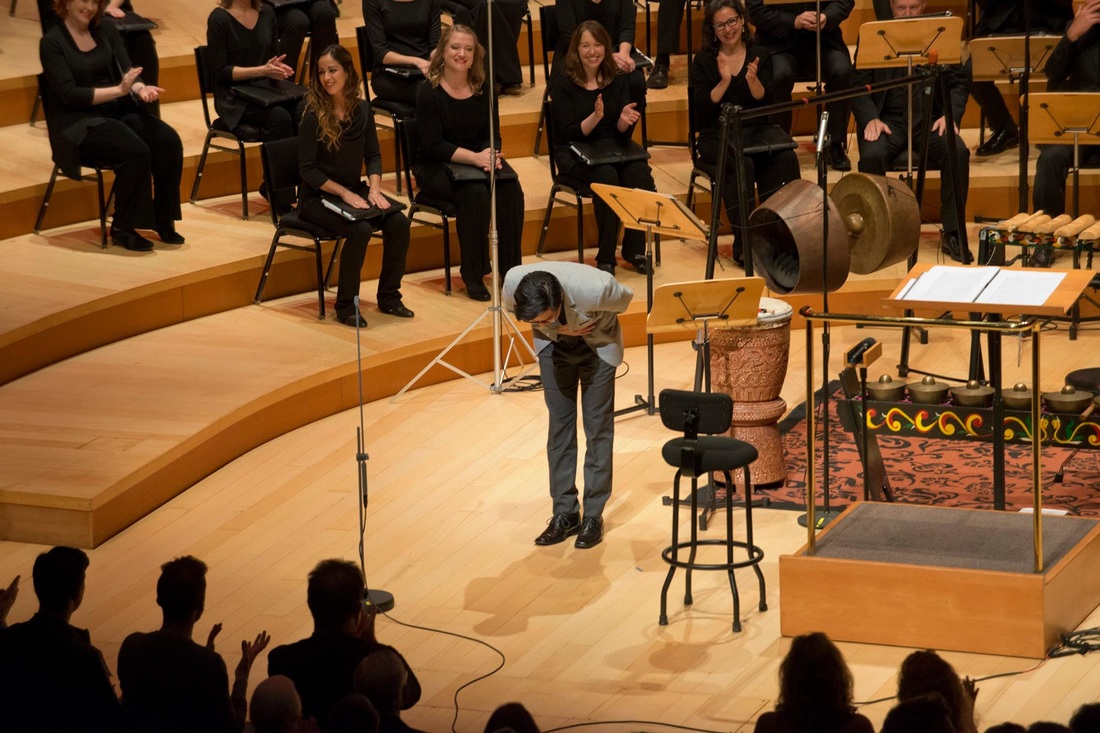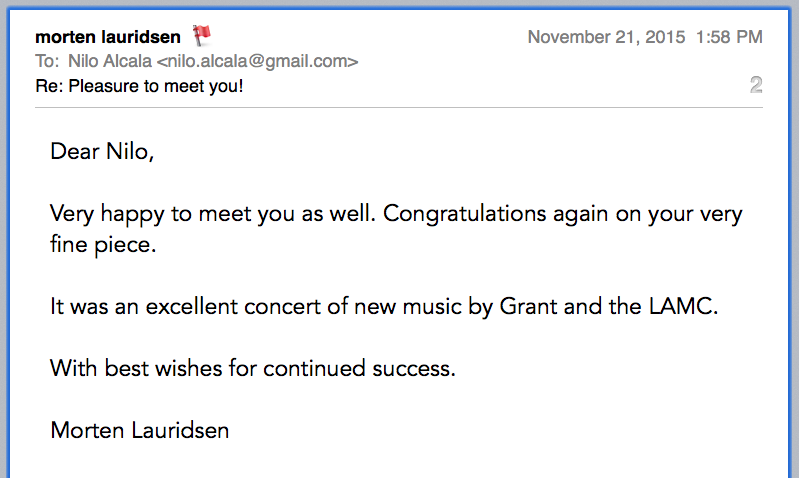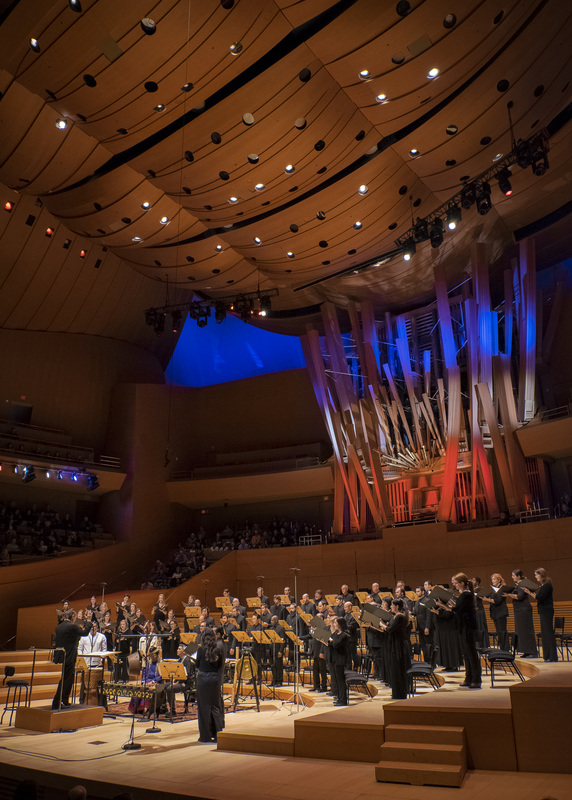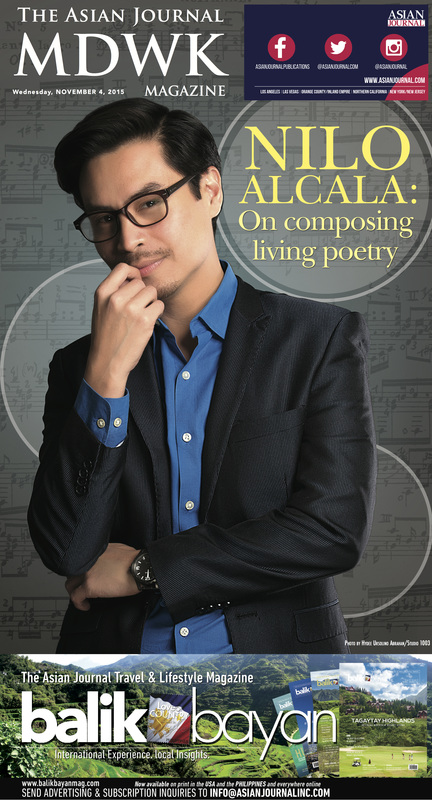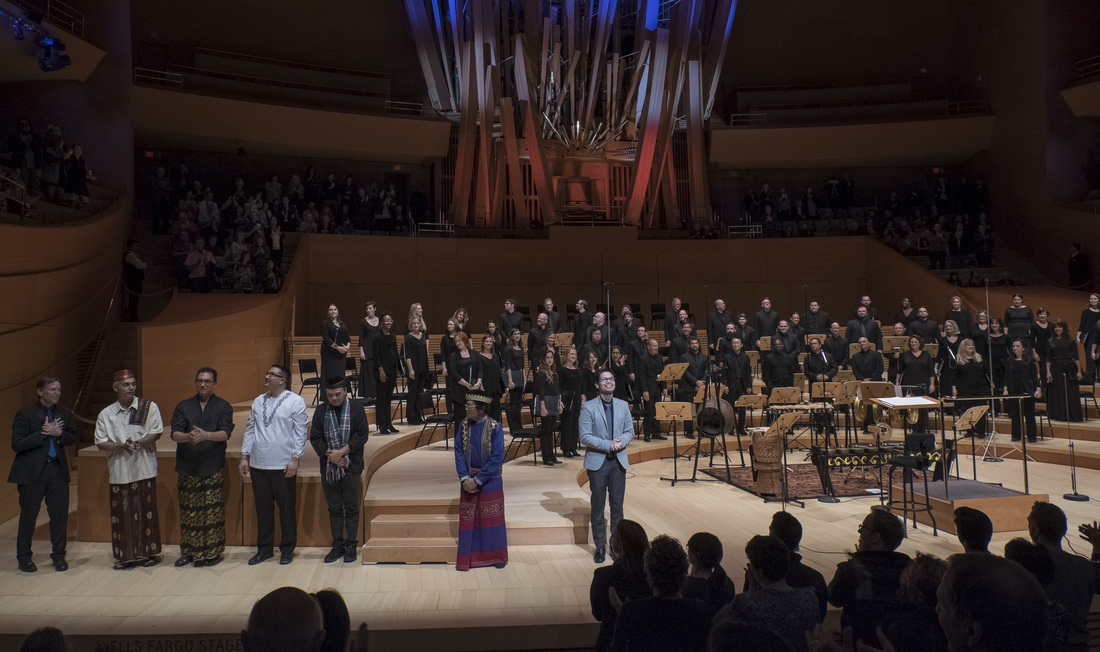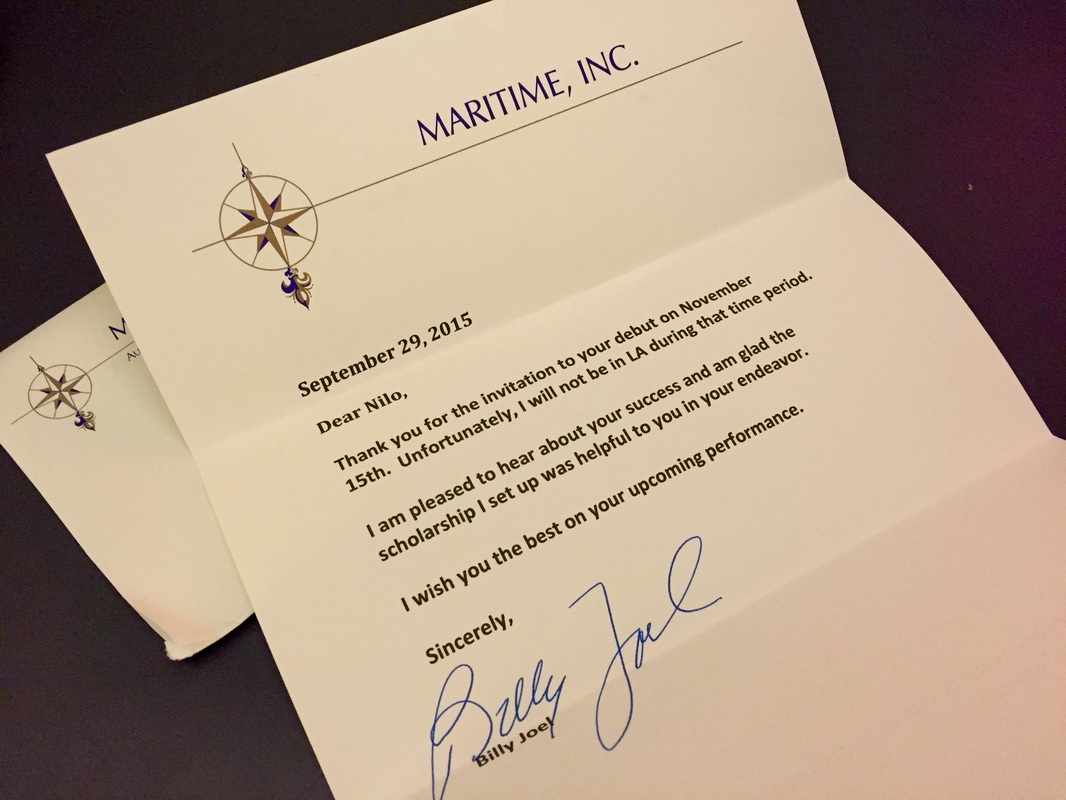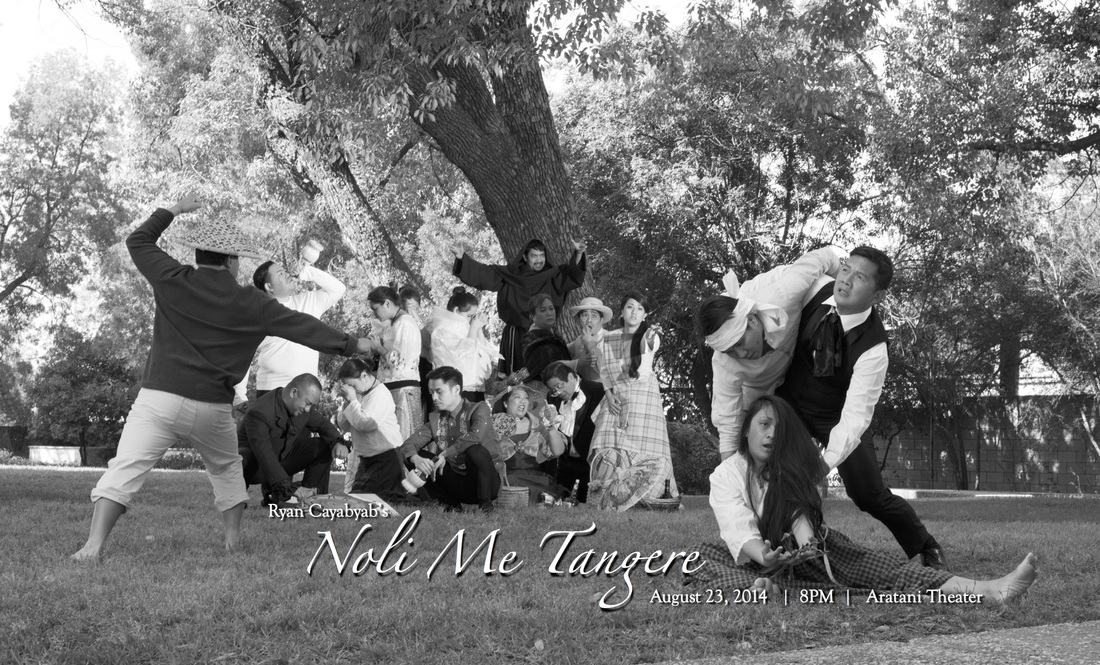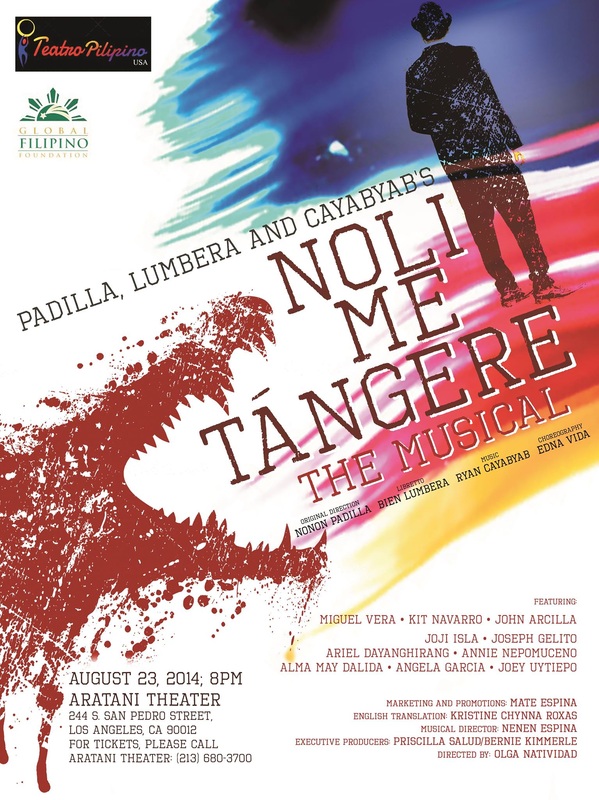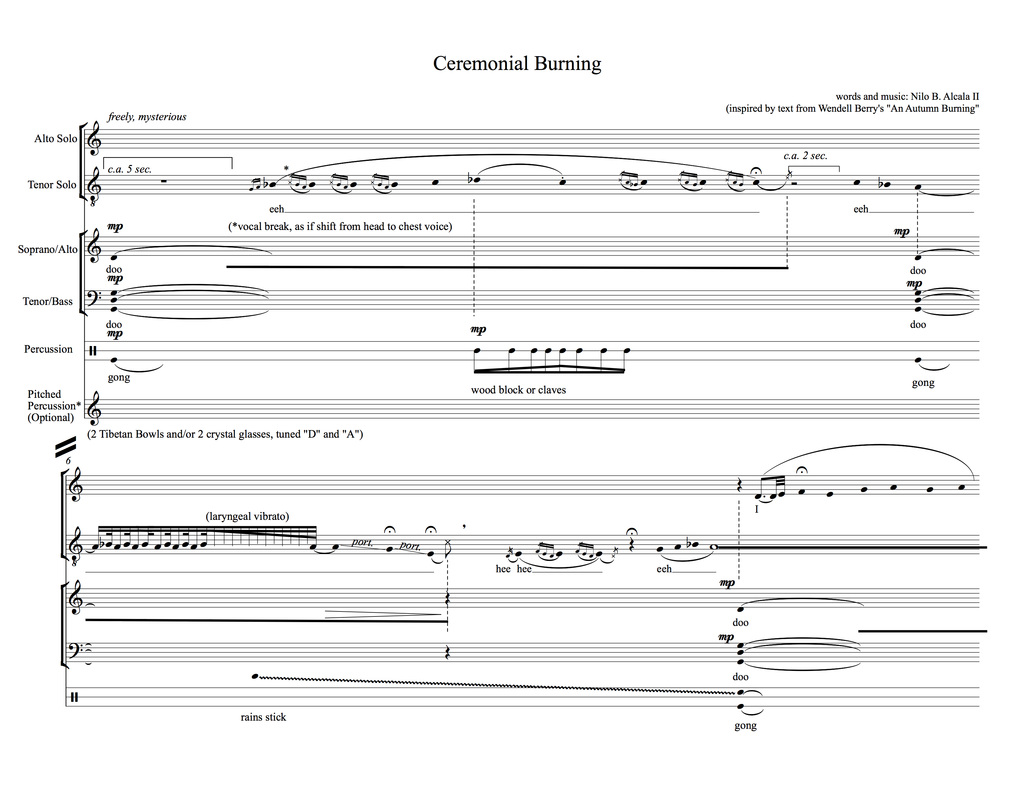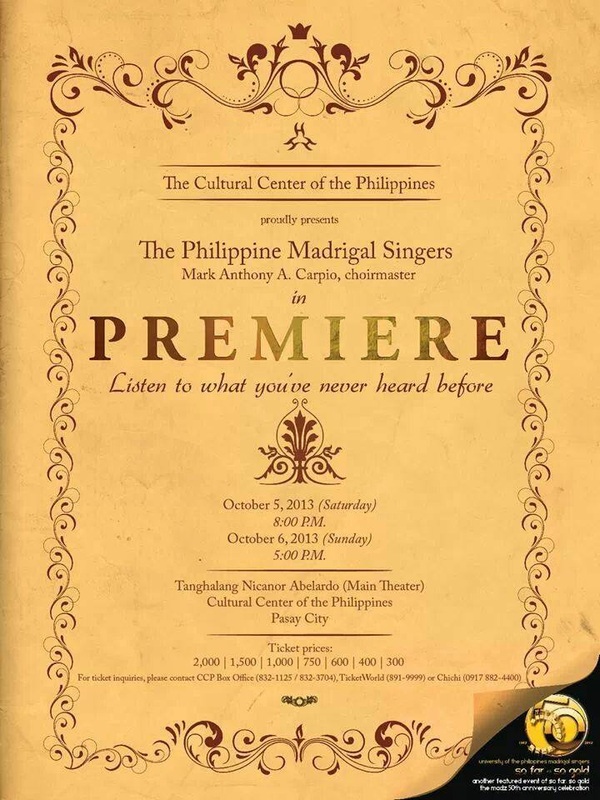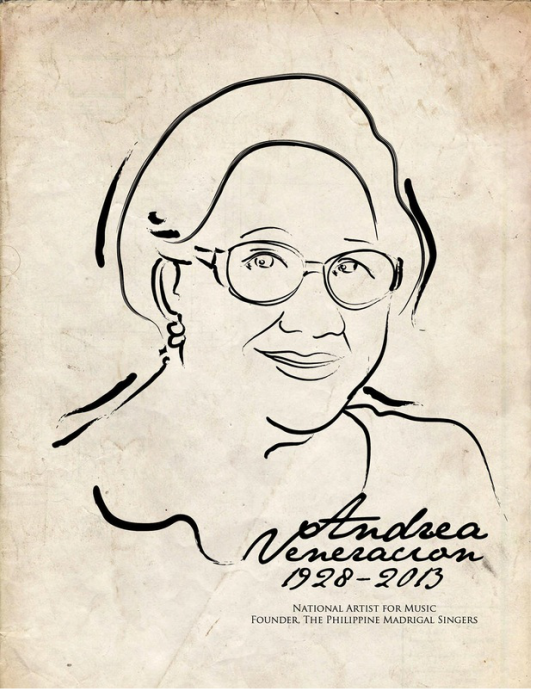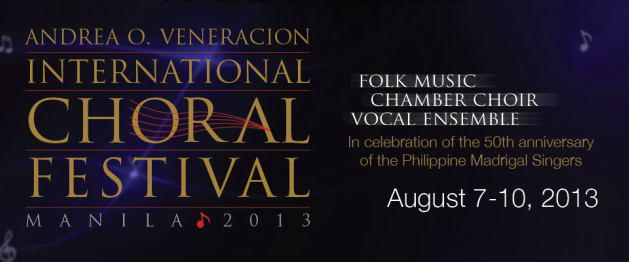|
RAPPLER: "Philippine-born composer bags The American Prize in Composition 2019 RAPPLER: "Philippine-born composer bags The American Prize in Composition 2019"News article from RAPPLER: www.rappler.com/life-and-style/arts-and-culture/235301-nilo-alcala-winner-american-prize-composition-2019 RESULTS ARE IN!!! "Mangá Pakalagián/Ceremonies" (Nilo Alcala) is 2018-2019 The American Prize WINNER in Composition (Professional Choral Division, Major Works Category)! I am very honored! Special thanks to the LA Master Chorale, Artistic Director Grant Gershon, and then LAMC President/CEO Terry Knowles for commissioning this piece in 2015! Friends in Los Angeles, don't miss the chance to hear this work as the LA Master Chorale presents a reprise performance next season, May 17, 2020! (Thanks to Meastro Gershon, as well as Jean Davidson, current LAMC President & CEO) Truly grateful for this! Thank you, God! _____________________ The American Prize: celebrating American excellence in the arts, more info: http://bit.ly/2FP17hT LA Master Chorale concert info: https://lamasterchorale.org/alice-parker Acknowledgements as well to the following ensembles for the audio excerpts in this video: II. Papedsalámat - Ateneo Chamber Singers (Jonathan Velasco) III. Sagayán - Philippine Madrigal Singers (Mark Anthony Carpio) Remembering too the late kulintang master, Danongan Danny Kalanduyanwho performed with us during the world premiere in 2015. About MANGÁ PAKALAGIÁN: Commissioned and premiered by the Los Angeles Master Chorale for its "Made in LA" concert in 2015, MANGÁ PAKALAGIÁN (Ceremonies) is a multi movement suite for choir and kulintang ensemble that takes inspiration from the Maguindanao people of Southern Philippines and how they use traditional music to punctuate or celebrate events in the community, thus elevating these events into a ceremony. The kulintang is the foremost traditional percussion ensemble in Maguindanao and is a set of graduated metallic gongs which plays the melody. Kulintang also refers to the traditional repertoire as well as the whole percussion ensemble itself. The Maguindanaons play a specific traditional kulintang piece for every occasion, ritual, or ceremony. Featured in Manga Pakalagian are three of these ceremonies, with actual traditional kulintang music as preludes. The world premiere on November 15, 2015 at the Disney Concert Hall featured the LA Master Chorale (Grant Gershon, Artistic Director) together with the late master kulintang artist Danongan Danny Kalanduyan with his group SUBLA on the kulitang ensemble. Announcement from THE AMERICAN PRIZE: theamericanprize.blogspot.com/2019/07/winners-composers-major-choral-works.html COPLAND HOUSE: We are excited to congratulate two recent Residents on accolades announced just this week. NILO ALCALA (seen at the workdesk in Copland's studio during his 2016 Residency) has won the 2019 American Prize in Composition (in the Major Choral Works category) for his Mangá Pakalagián/Ceremonies. 2nd Place went to 2017 Resident LANSING McCLOSKEY for his Zealot Canticles, which had earlier this year won a Grammy Award for Best Choral Performance.
0 Comments
Interview with Lori Walsh of South Dakota Public Broadcasting (SDPB) radio . To listen, click HERE
TV interview at Keloland Living with host Jeff Kleeman, together with South Dakota Symphony Orchestra conductor Maestro Delta David Gier, and fellow composer Reena Esmail:
It is an utmost honor to for me to be Musical America Worldwide’s NEW ARTIST OF THE MONTH. Being part of this roster of extremely talented musicians is quite humbling. More significantly, this spotlights not just me but the underrepresented Filipino-American artists. My sincerest thanks to Musical America and Thomas May for this beautifully written feature.
full article: HERE (*Musical America is the oldest American magazine on classical music, first appearing in 1898 in print and in 1999 online). CONGRATULATIONS and THANK YOU, World Youth Choir 2018 and conductor Jonathan Velasco for the very thoughtfully/marvelously sung and musically/intelligently interpreted GLORIA (N. Alcala), shown here in this video (by Felipe da Paz) in it’s China Premiere at the magnificent Beijing Concert Hall! (July 21, 2018) Special shout out to Eman de Leon and UP Manila Chorale for commissioning the piece in 2016 The Manila Symphony Junior Orchestra wins FIRST PRIZE at the Summa Cum Laude Youth Music Festival held at the iconic Musikverien Vien. Originally written for chorus, “DAYO DAYO KUPITA” by Nilo Alcala was part of the ensemble’s winning repertoire, played in this video at a concert prior to the competition.
Crossing the Bar (Alfred, Lord Tenyson) Program Notes I remember, as a young teenager, being deeply moved by my first encounter of Alfred, Lord Tennyson’s iconic ode “Crossing the Bar”. The imagery it stirs up, the sense of peace it evokes, and the thoughts and questions it provokes remain to this day for me such a powerful, bright beacon in this journey we call life. I am hoping, as many others do, that at my last earthly breath, whenever that will be —there will only be peace, contentment, and gratitude. The setting begins with cascading notes forming an aural backdrop for the “sunset and evening star”. The soothing yet melancholic textless motif (solo soprano) is the essence of the one being summoned. It longs for no sorrow, no mourning: this desire is echoed by multiple voices like gentle waves of the sea. And just as the speaker longs for a tide that is full and unagitated, the choral setting proceeds to paint broad strokes of hymn-like chords. As the second half of the poem mirrors its first half, the choral setting almost seemingly (yet not exactly) mirrors the form/structure of its first half. This time this “longing” is expanded to a plaintive, seemingly nostalgic melody and is echoed by several soloists; this crescendos to a full, soaring tutti as it “crosses the bar”. The soothing, textless motif soars and disappears with the “tide”…and it’s memory, a remnant chord, is now only faintly heard at the end. - Nilo Alcala - - - - Commissioned/Premiere by: C4: The Composer/Conductor Collective "Water Music" June 7, 2018 at 8pm -- Baruch Performing Arts Center June 9, 2018 at 8pm -- Church of Saint Luke in the Fields more info: http://www.c4ensemble.org/june-2018-concerts.html CROSSING THE BAR
Alfred, Lord Tennyson Sunset and evening star And one clear call for me! And may there be no moaning of the bar, When I put out to sea, But such a tide as moving seems asleep, Too full for sound and foam, When that which drew from out the boundless deep Turns again home. Twilight and evening bell, And after that the dark! And may there be no sadness of farewell, When I embark; For though from out our bourne of Time and Place The flood may bear me far, I hope to see my Pilot face to face When I have crossed the bar. MADZ performs SAGAYÁN (from Mangá Pakalagián) at the 2017 European Grand Prix for Choral Singing11/6/2017
Mangá Pakalagián (Ceremonies) - Nilo Alcala
Composer’s Notes I grew up in the Philippines where culture is as colorful and diverse as the number of its islands — all 7,107 of it. A quick Google search of “Philippine History” will give you a peak at our rich history of pre-colonial kingdoms (rajahnates, sultanates, etc.) which began to rise about 900 AD. Prior to Christianization of the Central and Northern parts, and even prior to the Islamization of the Southern parts of the country — these Philippine kingdoms shared with its neighboring Southeast-Asian lands a gong-chime culture that has, at the center of its music-making, a set of graduated and bossed pot gongs. The Philippines’ very own bossed gongs we call kulintang. Our rich pre-colonial kulintang music remained intact up to this very day, yet the general musical culture of the country has been arguably enriched by the active trading within the Asian region, as well as the Spanish colonial rule (for 300 years), the brief British Invasion, the American occupation, and the Japanese occupation. Even as I grew up in mainly-Christian Luzon region (Northern Philippines), I have been in awe of the richness of this gong-chime culture prevalent in (present day) Islamic areas of Mindanao (Southern Philippines). While an undergrad in composition, I studied kulintang as a minor instrument and attended various lectures on kulintang to satiate this fascination. During that time, I’ve begun composing based on traditional chants from Southern Philippines, incorporating them especially in choral music. When LA Master Chorale Artistic Director Grant Gershon reached out to me to commission a work for chorus that would feature a Filipino Master Musician, I had the kulintang instrument in mind. In my search for a Master Musician I was fortunate to have come in contact with legendary kulintang artist and National Endowment for the Arts awardee Guru Danongan “Danny” Kalanduyan who is currently based in the Bay Area. (Incidentally, I had brief kulintang lessons with his brother while I was an undergrad at the University of the Philippines College of Music.) Ceremonies: music and community The playing of kulintang (which refers both to the repertoire played as well as the actual instrumental set of bossed gongs) — is very much integrated in the everyday life of Mindanao communities especially in Maguindanao where the Kalanduyans hail from. In almost every occasion, there is a specific kulintang piece to be played; the playing of this music somewhat elevates a community event or ritual into “ceremony status”. Mangá Pakalagián is a suite of 3 choral works that highlight ceremonies or rituals with kulintang at the forefront: 1) welcoming and honoring guests, 2) thanksgiving during harvest, and 3) invoking invincibility in a pre-battle/war ritual. The three choral pieces are to be introduced by actual traditional kulintang repertoire specific to those ceremonies/rituals, namely 1) Kapagonor, 2) Kaluntang, and 3) Tagonggo. It took several visits and interviews with Guru Danny, as well as months of personal research before I was able to delimit the scope of the ceremonies to these three. I then wrote the texts for all three pieces of the suite which was then translated by Guru Danny into his Maguindanaon dialect. Ceremony 1: Midtagapéda (Fellowship) The Maguindanaon's welcome distinguished guests into their villages by playing the kulintang piece called Kapagonor. Its root word onor means accomplished, and as such it is solely played before someone they deem important. As I wrote the text for this, I imagined the royalties of olden Mindanao, led by a chieftain and his wife, welcoming rulers or maybe important traders from other islands of the region with such pomp and musical extravaganza — most likely with its kulintang ensemble being played by their most skilled musician. Two soloists in the choral piece, a tenor and a soprano — may very well serve as the royal couple welcoming these guests. It wouldn’t be far off if their fortunate guests would have received gifts that include the kulintang bossed gongs, apart from the musical entertainment itself as played by a master musician. This piece (as in all three ceremonial pieces) draw from the kulintang aesthetic of having multi-layers of rhythmic motifs that serve various functions — as main melodic rhythm, middle ground rhythm, background rhythm, etc. As traditional kulintang “rules” of playing give leeway to improvisation, so does segments of this choral work to the kulintang player. The integration of everyday ‘bodily percussion’ into the composition, i.e., stomping and clapping — is my own symbolic way to ‘reciprocate’ the integration of music into the everyday life of the Maguindanaons. Ceremony 2: Papedsalámat (Thanksgiving) The traditional piece Kaluntang serves as prelude to the second piece, Papedsalámat. Kaluntang is usually played on the wooden or bamboo counterpart instruments of the kulintang ensemble. Playing this during harvest supposedly scares off birds to protect the crops, but most importantly to ceremonially signify the festive day of harvest. Drawing from the concept of Kanduli — the Maguindanaon thanksgiving banquet — I have written the text as a call to the villagers to celebrate a bountiful blessing. It is widely believed in the region that preparing this banquet is both a way of Thanksgiving for past blessings as well as asking for them anew. Incorporated into the piece are pairs of pebbles to be struck together by the men in the chorus — another ‘symbolic reciprocation’ this time using stones that are found in nature, just as kulintang playing is integrated into a ritual which thus celebrates nature. I also have come to see these pebbles as inanimate representation of the seeds that were sown seasons ahead of the bountiful yield of crops. Ceremony 3: Sagayan (Pre-Battle Ritual) The traditional kulintang music Tagonggo that opens this ceremony, is originally not intended to be played in concerts. It is actual ritual music used in 1) healing rituals, 2) driving away negative energy/spirits, and 3) at a pre-war ceremony to invoke invincibility and power. The playing of Tagonggo pre-dates Islamic Maguindanao and nowadays has interestingly evolved into music that signifies important festive events, like wedding ceremonies. Sagayan, the title of the choral work, focuses on the pre-battle aspect of the ritual and is also the traditional name of the dance ritual that is accompanied by Tagonggo. Related to this pre-battle ritual is Kasalawat, a practice of chanting to seek for blessing. The choral piece begins with a Male solo chant, seemingly initiating the ritual which then proceeds to a rhythmic ritual dance music. This ritual dance music has a slow interlude to be sung by the women of the chorus in which I imagined the wives of the Maguindanaon warriors pleading for their husbands. The work closes with the kulintang ensemble and the chorus coming together in a mélange of rousing traditional melodies and rhythms with brief segments of kulintang improvisation — all underscoring an imagined ancient battle. Scale, Aesthetic The scales and pitches of kulintang ensemble instruments vary from one village to another, and is mostly not well-tempered — an added challenge in putting together the work. The main instrument kulintang has eight gongs and often features a pentatonic scale with a few repeated notes to complete the eight-note pitches. An inspiration for the multi-layer and intricate rhythmic texture of the whole work are the intricate and very colorful designs of Mindanao textiles and tapestries. You will hear different layers of organically related motifs that are interwoven in various sonic atmospheres; this results in a texture that is both intricate, driven, and evolving. Evident in sections throughout the suite are interlocking rhythmic patterns, similar to a hocket, wherein a single melodic or rhythmic material is spread among the vocal sections, creating a resultant melody or soundscape. NOW on iTunes/Google Play/AMAZON/Spotify |
| |
|
28th LA Master Chorale HS Choir Festival
Grant Gershon, conductor
April 21, 2017 - Walt Disney Concert Hall
The Los Angeles Master Chorale has proudly presented its annual High School Choir Festival for more than 25 years. In 1989 we began the great tradition of offering students a chance to deepen their exposure and understanding of the choral art through a year-long experience leading up to the celebratory Festival Day. We partner with selected high schools for a year of fun and memorable musical experiences as choir students work collaboratively with their peers from around the Southland.
The 2017 Festival culminated in a monumental performance at the awe-inspiring Walt Disney Concert Hall. Choir students from 29 schools joined together to sing as a massive ensemble, experiencing the power of choral music under the direction of Grant Gershon, Artistic Director of the Los Angeles Master Chorale.
Club Six Studios launches its first iOS game!
Original Soundtrack by Nilo Alcala:
press release: goo.gl/MVMO3m
"The Copland House Residency Awards were inspired by Copland's exceptional legacy of support for his fellow composers. Based at Copland House, a National Historic Landmark and an Official Project of the federal Save America's Treasures program, the Copland House Residency Awards have earned nationwide recognition and esteem since they began in November 1998."
(from www.coplandhouse.org)
It was to be the last ticketed concert for the band, ever. This short film was recorded at the last major event at Candlestick Park in August 2014 - Paul’s ’Farewell to Candlestick: The Final Concert’.
September 15th see the exclusive presentation of The Beatles 30 min performance at Shea Stadium only in theatres along with Ron Howard’s Eight Days A Week - The Touring Years.
Youtube Link: https://youtu.be/p68DpIdtiDs
Official website: goo.gl/a0WiQA
produced by White Horse Pictures
Film Credits:
Producer - Nigel Sinclair
Executive Producer - Paul Crowder
Executive Producer - Nicholas Ferrall
Supervising Producer - Marc Ambrose
Production Supervisor - John Rita
License Manager - Mark McCune
Editor - Charles Uy
Director of Photography - Jessica Young
Camera Operator - Victor Avila
Drone Cinematographer - Doug Thron
C Cam - Marc Ambrose
C Cam - Paul Crowder
DIT - Jamie Boulton
Camera Operator / 1st AC - Ryley Fogg
Sound - Robert Kennedy
Gaffer - Kiva Knight
Production Supervisor - John Rita
License Manager - Mark McCune
Post Supervisor - Alex De La Vega
Coordinator - Cory Dagg
Camera Assistant Dennis McGrath
Archive Specialist/SME - Erik Taros
Music by Nilo Alcala
Candlestick footage courtesy of Monnica Sepulveda
Candlestick footage courtesy of Peter Slingluft
Candlestick footage courtesy of Barry Hood
Cameras provided by Eastside Camera services
|
Prelude I - Kapagónor*
Ceremony I - Midtagapedá Prelude II - Kaluntáng* Ceremony II - Papedsalámat Prelude III - Tagónggo* Ceremony III -Sagayán |
Los Angeles Master Chorale (Grant Gershon, Artistic Director)
Danongan Danny Kalanduyan
Subla
Walt Disney Concert Hall
November 15, 2015
Photos by Rick Gavino, Ding Carreon, and Alexandra Lee Nurthen (ALN Images).
REVIEWS
@alcalanilo @LAMasterChorale Extraordinary work, Nilo! BRAVO!
— Eric Whitacre (@EricWhitacre) November 17, 2015
REVIEW - Lauri D. Goldenhersh
Alcala’s second movement lets the male singers hit things too, as they clack rocks together, stomp feet and the choir builds layer upon layer of chant, creating the effect of many voices, many conversations. Soprano soloist Hayden Eberhart sailed through the stratosphere, and there was no stopping the general expression of toe-tapping gratitude. Moving on to the finale, baritone Abdiel Gonzalez seemed especially “on” this evening, stretching his range and often dwelling on the nether notes. Through slides, shakes and exclamations, his voice was sure, with rich and vibrant sound, even through voiced hums, grunts and more. The choir, too, had special vocal techniques to tackle here, which sounded surprisingly organic to the same versatile crop of singers who have mastered Renaissance purity and Verdian majesty so thoroughly. Improvised mutterings and broad chords were powerful enough to rival Carmina burana, bringing the power of ritual to one of the world’s least staid concert halls. There is a communal quality to this work that is spectacularly engaging, clear through to a full-throttle, eye-popping finale.
Composer Nilo Alcala’s concert finale earned a well-deserved standing ovation.
FULL REVIEW at: http://laurislist.net/blog/2015/11/made-in-l-a-local-focus-reveals-the-heart-of-la-master-chorale/#sthash.vzJfg5Bs.dpuf
REVIEW - Leticia Marie Sanchez
FULL REVIEW at: http://culturalcocktailhour.com/review-made-in-l-a-by-los-angeles-master-chorale/5037/
REVIEW - Ahdda Shur
LA Master Chorale's "Made in LA" concert this past weekend, Sunday, Nov. 15th, 2015 at the Walt Disney Concert hall,...
Posted by Ahdda Shur on Tuesday, November 17, 2015
FEATURE - Ruben Nepales
Proud moment for me as a Pinoy tonight (Nov. 15) at the famed Walt Disney Concert Hall in downtown Los...
Posted by Ruben Nepales on Sunday, November 15, 2015
Proud moment for me as a Pinoy tonight (Nov. 15) at the famed Walt Disney Concert Hall in downtown Los Angeles!
Composer Nilo Alcala received standing ovation and enthusiastic cheers for several minutes at the end of his composition, "Manga Pakalagian (Ceremonies)."
The celebrated interiors of the Frank Gehry-designed concert hall reverberated with Nilo's music and Maguindanaon lyrics (the Grammy winning Los Angeles Master Choral sang in a Filipino dialect--Maguindanaon--for the first time), and the sounds of the Subla Kulintang Ensemble and Guro Danongan "Danny" S. Kalanduyan, the solo voices of Sal Malaki (the Filipino member of LA Master Chorale), Ayana Haviv and Abdiel Gonzalez.
Nilo, a UP alumnus who sang with and composed for the Philippine Madrigal Singers, was one of the LA-based chorale composers featured in the concert titled, "Made in L.A." His composition was the night's finale.
Bravo to Nilo, all the featured composers, LA Master Chorale and its conductor and artistic director, Grant Gershon, soloists Sal Malaki (Filipino member of the acclaimed chorale), Subla Kulintang Ensemble and Guro Danongan "Danny" S. Kalanduyan.
Read my column on Nilo published before this concert:
http://entertainment.inquirer.net/181591/grammy-nominated-chorale-to-premiere-up-alumnuscomposition
FEATURE - Prosy Dela Cruz
It was a beautiful night of inclusiveness, of bounce, of rhythm, of innovative synergies fit for royalties of the Maguindanao region, and those around the world.
See more at: http://asianjournal.com/lifestyle/triumphant-nilo-alcala-on-world-acclaimed-walt-disney-hall/#sthash.YvKOHDaX.dpuf
Also at: http://asianjournal.com/aj-magazines/nilo-alcala-an-emissary-for-music/
|
|
|
|

Mangá Pakalagián (Ceremonies) - Nilo Alcala
Composer’s Notes
I grew up in the Philippines where culture is as colorful and diverse as the number of its islands — all 7,107 of it. A quick Google search of “Philippine History” will give you a peak at our rich history of pre-colonial kingdoms (rajahnates, sultanates, etc.) which began to rise about 900 AD. Prior to Christianization of the Central and Northern parts, and even prior to the Islamization of the Southern parts of the country — these Philippine kingdoms shared with its neighboring Southeast-Asian lands a gong-chime culture that has, at the center of its music-making, a set of graduated and bossed pot gongs. The Philippines’ very own bossed gongs we call kulintang. Our rich pre-colonial kulintang music remained intact up to this very day, yet the general musical culture of the country has been arguably enriched by the active trading within the Asian region, as well as the Spanish colonial rule (for 300 years), the brief British Invasion, the American occupation, and the Japanese occupation.
Even as I grew up in mainly-Christian Luzon region (Northern Philippines), I have been in awe of the richness of this gong-chime culture prevalent in (present day) Islamic areas of Mindanao (Southern Philippines). While an undergrad in composition, I studied kulintang as a minor instrument and attended various lectures on kulintang to satiate this fascination. During that time, I’ve begun composing based on traditional chants from Southern Philippines, incorporating them especially in choral music.
When LA Master Chorale Artistic Director Grant Gershon reached out to me to commission a work for chorus that would feature a Filipino Master Musician, I had the kulintang instrument in mind. In my search for a Master Musician I was fortunate to have come in contact with legendary kulintang artist and National Endowment for the Arts awardee Guru Danongan “Danny” Kalanduyan who is currently based in the Bay Area. (Incidentally, I had brief kulintang lessons with his brother while I was an undergrad at the University of the Philippines College of Music.)
Ceremonies: music and community
The playing of kulintang (which refers both to the repertoire played as well as the actual instrumental set of bossed gongs) — is very much integrated in the everyday life of Mindanao communities especially in Maguindanao where the Kalanduyans hail from. In almost every occasion, there is a specific kulintang piece to be played; the playing of this music somewhat elevates a community event or ritual into “ceremony status”.
Mangá Pakalagián is a suite of 3 choral works that highlight ceremonies or rituals with kulintang at the forefront: 1) welcoming and honoring guests, 2) thanksgiving during harvest, and 3) invoking invincibility in a pre-battle/war ritual. The three choral pieces are to be introduced by actual traditional kulintang repertoire specific to those ceremonies/rituals, namely 1) Kapagonor, 2) Kaluntang, and 3) Tagonggo. It took several visits and interviews with Guru Danny, as well as months of personal research before I was able to delimit the scope of the ceremonies to these three. I then wrote the texts for all three pieces of the suite which was then translated by Guru Danny into his Maguindanaon dialect.
Ceremony 1: Midtagapéda (Fellowship)
The Maguindanaon's welcome distinguished guests into their villages by playing the kulintang piece called Kapagonor. Its root word onor means accomplished, and as such it is solely played before someone they deem important.
As I wrote the text for this, I imagined the royalties of olden Mindanao, led by a chieftain and his wife, welcoming rulers or maybe important traders from other islands of the region with such pomp and musical extravaganza — most likely with its kulintang ensemble being played by their most skilled musician. Two soloists in the choral piece, a tenor and a soprano — may very well serve as the royal couple welcoming these guests. It wouldn’t be far off if their fortunate guests would have received gifts that include the kulintang bossed gongs, apart from the musical entertainment itself as played by a master musician.
This piece (as in all three ceremonial pieces) draw from the kulintang aesthetic of having multi-layers of rhythmic motifs that serve various functions — as main melodic rhythm, middle ground rhythm, background rhythm, etc. As traditional kulintang “rules” of playing give leeway to improvisation, so does segments of this choral work to the kulintang player.
The integration of everyday ‘bodily percussion’ into the composition, i.e., stomping and clapping — is my own symbolic way to ‘reciprocate’ the integration of music into the everyday life of the Maguindanaons.
Ceremony 2: Papedsalámat (Thanksgiving)
The traditional piece Kaluntang serves as prelude to the second piece, Papedsalámat. Kaluntang is usually played on the wooden or bamboo counterpart instruments of the kulintang ensemble. Playing this during harvest supposedly scares off birds to protect the crops, but most importantly to ceremonially signify the festive day of harvest.
Drawing from the concept of Kanduli — the Maguindanaon thanksgiving banquet — I have written the text as a call to the villagers to celebrate a bountiful blessing. It is widely believed in the region that preparing this banquet is both a way of Thanksgiving for past blessings as well as asking for them anew.
Incorporated into the piece are pairs of pebbles to be struck together by the men in the chorus — another ‘symbolic reciprocation’ this time using stones that are found in nature, just as kulintang playing is integrated into a ritual which thus celebrates nature. I also have come to see these pebbles as inanimate representation of the seeds that were sown seasons ahead of the bountiful yield of crops.
Ceremony 3: Sagayan (Pre-Battle Ritual)
The traditional kulintang music Tagonggo that opens this ceremony, is originally not intended to be played in concerts. It is actual ritual music used in 1) healing rituals, 2) driving away negative energy/spirits, and 3) at a pre-war ceremony to invoke invincibility and power. The playing of Tagonggo pre-dates Islamic Maguindanao and nowadays has interestingly evolved into music that signifies important festive events, like wedding ceremonies. Sagayan, the title of the choral work, focuses on the pre-battle aspect of the ritual and is also the traditional name of the dance ritual that is accompanied by Tagonggo.
Related to this pre-battle ritual is Kasalawat, a practice of chanting to seek for blessing. The choral piece begins with a Male solo chant, seemingly initiating the ritual which then proceeds to a rhythmic ritual dance music. This ritual dance music has a slow interlude to be sung by the women of the chorus in which I imagined the wives of the Maguindanaon warriors pleading for their husbands.
The work closes with the kulintang ensemble and the chorus coming together in a mélange of rousing traditional melodies and rhythms with brief segments of kulintang improvisation — all underscoring an imagined ancient battle.
Scale, Aesthetic
The scales and pitches of kulintang ensemble instruments vary from one village to another, and is mostly not well-tempered — an added challenge in putting together the work. The main instrument kulintang has eight gongs and often features a pentatonic scale with a few repeated notes to complete the eight-note pitches.
An inspiration for the multi-layer and intricate rhythmic texture of the whole work are the intricate and very colorful designs of Mindanao textiles and tapestries. You will hear different layers of organically related motifs that are interwoven in various sonic atmospheres; this results in a texture that is both intricate, driven, and evolving. Evident in sections throughout the suite are interlocking rhythmic patterns, similar to a hocket, wherein a single melodic or rhythmic material is spread among the vocal sections, creating a resultant melody or soundscape.
LA is the world.
Diversity and the celebration of tradition propel arts and culture in the Philippines where I grew up, and the richness of the culture has added color to my own music. It is such great honor to present this to the world via my adoptive city, Los Angeles — a true melting pot of world cultures.
This fanboy is awestruck!!! I wrote musician extraordinaire Billy Joel to invite him to the premiere of my composition...
Posted by Nilo Alcala on Tuesday, September 29, 2015
More info about the concert, HERE.
LAMC season announcement article, HERE.
Teaser (youtube link), HERE.
"Of Bells & Kings"
Nilo Alcala - vocal arrangement, video editing
Pete Avendano - recording, mixing
Gaile Deoso-Romanes of Wanderlust Creatives - direction
Jei Romanes of Wanderlust Creatives - photography
special thanks to:
Jay Mosquera
Gigi Geronga
visit:
http://www.niloalcala.com
http://wanderlustcreatives.wordpress.com
August 23, 2014, 8 PM at the Aratani Japan America Theater
For tickets, call 714-264-6665 (Peachie Uytiepo)
To vote, click this link:
HTTP://WWW.HANSZIMMERWANTSYOU.COM/TRACKS/2251
Nov 24, 2013
Benefit concert for the survivors of super typhoon Haiyan in the Philippines.
MADZ to premiere "Ceremonial Burning" (Alcala, 2013)
"PREMIERE" is part of the year-long celebration of the 50th Anniversary of the MADZ.
Text and Music by Nilo Alcala
(as inspired by Wendell Berry’s poem "An Autumn Burning")
I have fears to burn
Thoughts too ill to let pervade
I know a flame that quickens inside must purge these wraiths.
I fan this flame and it craves for more kindling.
This torch of courage burns them, nothing escapes.
And when the embers have died
There’s new light…
from the ash
Behold this blaze inside my heart.
Thank you Ma'am OA for your life that was full, inspirational, purposeful, impactful, noteworthy, exceptional, and very musical. We are mourning the loss of a no less than significant figure in Philippine choral music. You were like a mother to practically all you have led, taught, and inspired. Yet in the midst of this, we are celebrating your legacy and your undying spirit.
Soar high with choirs of angels singing with you...
The Cultural Center of the Philippines commissioned NILO ALCALA to write the official contest piece for the Chamber Choir Category. The composition is entitled "Three Kalingga Chants" based on the following indigenous tunes: Wiyawi, Salidumay, and Mambayu.
WEBSITE, click here: Andrea O. Veneracion International Choral Festival 2013
UPDATES from
NILO ALCALA
Archives
July 2019
February 2019
September 2018
August 2018
July 2018
June 2018
November 2017
September 2017
April 2017
February 2017
November 2016
August 2016
November 2015
September 2015
February 2015
December 2014
November 2014
August 2014
February 2014
November 2013
October 2013
August 2013
July 2013
March 2013
October 2012
August 2012
July 2012
Categories
All
Acda
Beatles
Candlestick Park
Choral
Commission
Composition
Concert
Conference
Convention
Documentary
Festival
Filipino
Film Score
Hollywood
Jose Rizal
Korea
Live
Madz
Music
Musical Theater
Performing Arts
Philippine Madrigal Singers
Radio Program
Ron Howard
Short Film
The Beatles
Traditional Music
White Horse Pictures
Workshop
